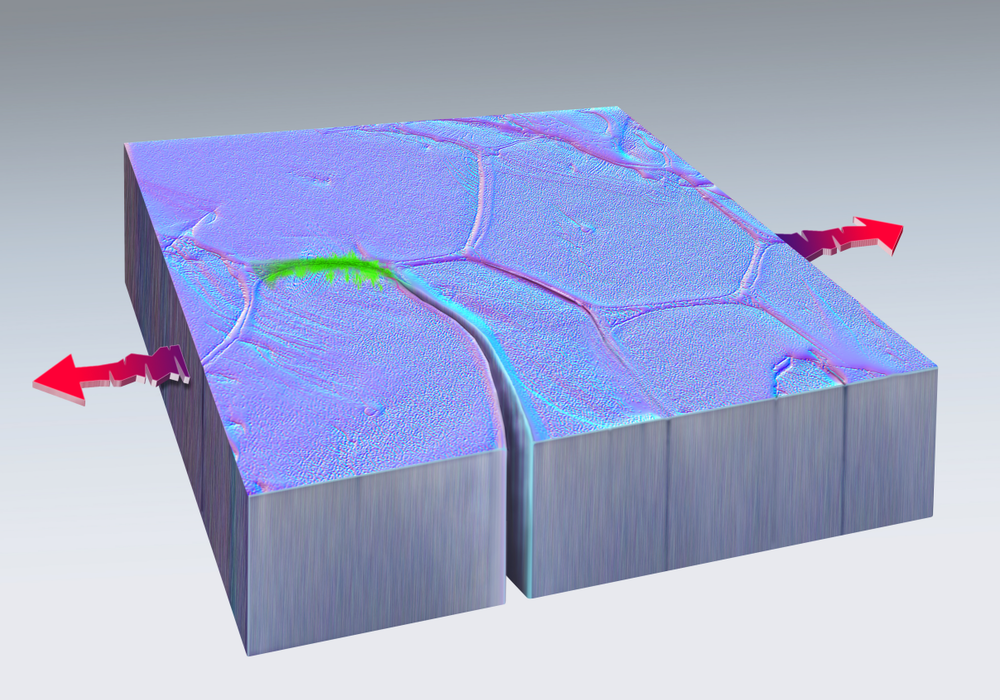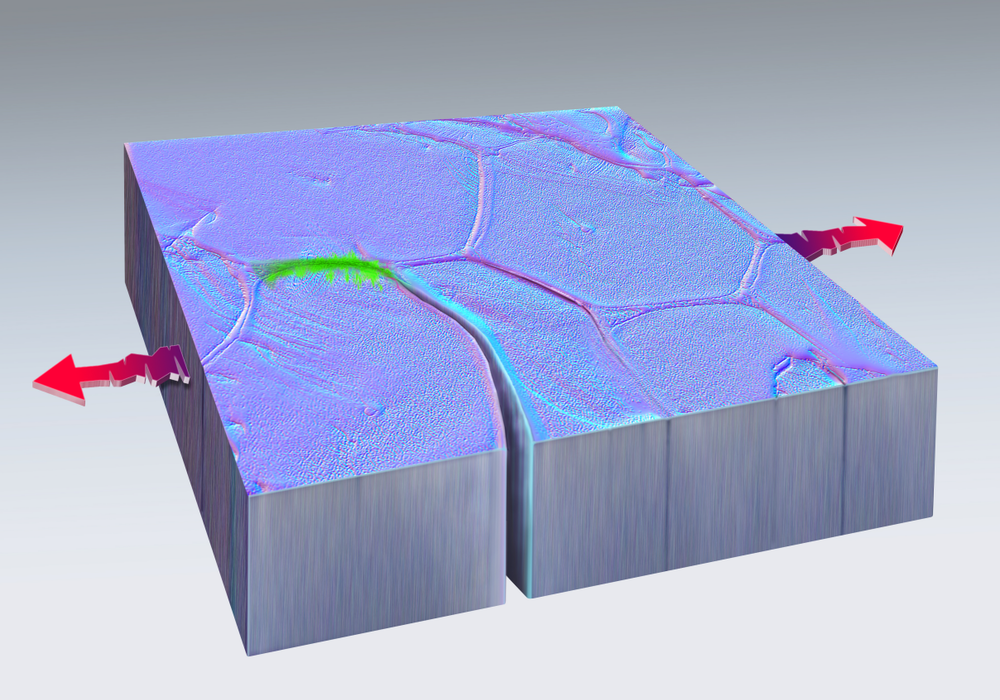Self-Healing Metal Observed
A sheet of metal that can weld its own cracks may sound like a concept from the pages of a science fiction novel. But that self-healing is exactly what Brad Boyce of Sandia National Laboratories in New Mexico and colleagues recently captured during experiments exploring the properties of damaged platinum films [1]. Their observations are a first for this behavior, which could have implications for the development of infrastructure that is resistant to mechanical fatigue.
Over the years, various scientists have theorized that, in a nonoxidative environment, any cracks that develop in a metal should close on their own. This so-called self-healing is predicted to arise if the atoms are brought back into proximity as local compressive strains push the atoms to reform bonds. “The process is akin to cold welding,” Boyce says, which is when materials in a vacuum adhere together without the help of fusion or heat. But, until now, no one had seen this welding take place.
Boyce and his team stumbled upon their observation while looking at a related property of metals: how grain boundaries within a crystalline nanometer-thick sheet of platinum metal move and change shape when the material is subjected to a cyclic load. Carrying out experiments at room temperature and inside the vacuum environment of an electron microscope, the team noticed that fatigue cracks that formed during the loading were growing and then retreating.
The team also observed that healed cracks did not reopen. Rather, as the cyclic loading continued, subsequent cracks followed their own unique paths. The material appeared to be “healing” itself. “That was really stunning to me,” Boyce says. The team also explored the self-healing behavior of copper, finding evidence that cracks in copper can also weld themselves back together.
Boyce says that the team’s observations suggest that the atoms’ positions in the material reconfigured during the healing process, leading to a change in the trajectory of the weakest path, and adds that more studies will be needed to fully explain this behavior. Boyce says that, while he can’t yet speculate on whether the mechanical properties of the platinum sheet changed because of the cracking, healing, and reconfiguring, the observations suggest that the healing somehow made the local region around a closed crack more fatigue resistant.
Though the idea of a self-healing metal might conjure exciting ideas about bridges that can mend cracks that form in their structures, avoiding a devastating collapse, or about cars that emerge from crashes undamaged, the rewelding process has yet to be observed under atmospheric conditions. Reinhard Pippan, a retired physicist from the Austrian Academy of Sciences, suggests that exposure to air would lead to oxidation at the boundaries of the crack. Theory indicates that this oxidation should prohibit self-healing. But if the cracks formed inside of the metal, the same behavior could be observed.
Boyce says he and his team have another electron microscope that can be used to do experiments in air. They plan to use the tool to study the self-healing process in an oxygen-containing environment. Experiments on larger metal blocks are also needed to see how the phenomenon plays out on systems relevant to real-world applications such as in the development of marine structures and other infrastructure. There’s an enormous set of industries that are interested in metals that are more resistant to fatigue, Boyce says. But he adds, “there’s still a lot more investigation needed before we can commercialize this [phenomenon] and take full advantage of it.”
–Allison Gasparini
Allison Gasparini is a freelance science writer based in Santa Cruz, CA.
References
- C. M. Barr et al., “Autonomous healing of fatigue cracks via cold welding,” Nature (2023).





